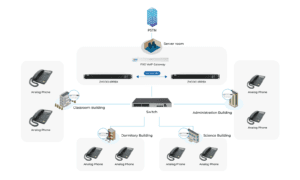In this article, we’ll walk you through everything you need to know about designing an effective recruitment training program for your organization. Let’s dive in!
Understanding the Importance of Recruitment Training
Why is Recruitment Training Essential?
The recruitment process isn’t just about filling open positions—it’s about making strategic hires to contribute to the organisation’s long-term growth. Recruitment training ensures your team has the latest knowledge and tools to find, assess, and onboard the best candidates. Without proper training, recruiters may struggle with ineffective interviewing techniques, poor candidate experiences, and gaps in understanding of current trends in hiring practices.
How Recruitment Training Benefits Your Organization
When recruiters are well-trained, they can effectively streamline the hiring process, reducing time to hire and improving candidate quality. Additionally, a training program helps recruiters align with company culture, hire more diverse talent, and enhance their communication skills. By investing in recruitment training, organisations can establish a recruitment process that delivers long-term success.
Key Components of a Successful Recruitment Training Program
Identifying Core Skills for Recruiters
Before designing your training program, you must define the core skills your recruitment team should develop. These skills include things like:
- Communication and interpersonal skills
- Interviewing and assessment techniques
- Use of technology in recruitment (e.g., applicant tracking systems)
- Candidate relationship management
- Cultural awareness and diversity hiring practices
Creating Engaging Training Modules
Recruitment training isn’t a one-size-fits-all approach. You must build engaging and relevant training modules that align with your company’s values and goals. The modules should cover various stages of the recruitment process, from sourcing candidates to making job offers. These modules should also include hands-on practice and real-world examples to engage learners and make the training more practical.
Traditional vs. Digital Training Methods
There are many ways to deliver recruitment training, each with pros and cons. Traditional face-to-face training can be great for building relationships and fostering team dynamics. However, digital training methods—such as webinars, e-learning modules, and virtual workshops—allow for more flexibility and cost savings. Consider blending the two approaches for the best of both worlds.
Blended Learning Approach
Blended learning is a strategy that combines online learning with in-person sessions. This hybrid model allows trainees to learn at their own pace while also providing opportunities for interactive discussions, case studies, and team activities. It offers flexibility while ensuring that learners stay engaged and retain information more effectively.
Step-by-Step Guide to Designing Your Recruitment Training Program
Step 1: Assess Your Organization’s Recruitment Needs
Every organisation has different recruitment needs depending on its size, industry, and hiring goals. The first step in designing a recruitment training program is to assess your current recruitment process and identify areas for improvement. Are you struggling with attracting top talent? Are interviews taking longer than they should? Understanding these pain points will help you tailor your training program to address them.
Step 2: Define the Objectives and Goals of the Training Program
Once you’ve identified your recruitment challenges, it’s time to set clear objectives for your training program. Do you want to improve your recruiters’ interviewing skills? Or perhaps streamline the process of sourcing candidates? Defining these goals will help you create a targeted program and measure its success later on.
Step 3: Develop Training Content
Now that you have your objectives and goals, it’s time to start developing training content. This content should cover the full recruitment lifecycle, including sourcing, screening, interviewing, and onboarding. Be sure to incorporate interactive elements such as quizzes, group activities, and role-playing exercises to reinforce key learning points.
Step 4: Select the Right Delivery Methods
The effectiveness of your training program largely depends on how you deliver the content. Will you use online courses, workshops, or on-the-job training? Choose delivery methods that align with your team’s preferences and learning styles. The goal is to make the training experience engaging, practical, and easily accessible.
Step 5: Implementing the Training Program
When it comes time to roll out your training program, ensure it’s well-organized and well-supported. Schedule regular check-ins with participants, encourage feedback, and provide additional resources or materials to help reinforce learning. Support from leadership is also key to ensuring that the training is prioritized and effective.
Measuring the Success of Your Recruitment Training Program
Evaluating Learner Progress
To gauge the effectiveness of your recruitment training, you’ll need to measure learner progress. Consider using assessments and quizzes to track knowledge retention and skill development throughout the training process. You could also use role-playing exercises to observe how recruiters apply their new skills in real-world scenarios.
Collecting Feedback from Participants
Feedback is a crucial component in measuring the success of any training program. Regularly ask your recruiters for feedback on what worked and what could be improved. This allows you to adjust future training sessions and ensures that the program remains relevant and effective.
Common Challenges and How to Overcome Them
Keeping the Training Relevant and Up to Date
Recruitment trends are constantly evolving. It’s essential to keep your training program updated to reflect the latest best practices, technologies, and legal requirements. Conduct regular reviews and incorporate feedback from industry experts to ensure that your training program remains fresh and relevant.
Ensuring Consistency Across Teams
If your organization has multiple recruitment teams, ensuring consistency in training can be a challenge. To solve this, consider creating a centralised training hub where recruiters from all teams can access the same resources, courses, and guidelines. This helps ensure everyone is on the same page and follows consistent processes.



































